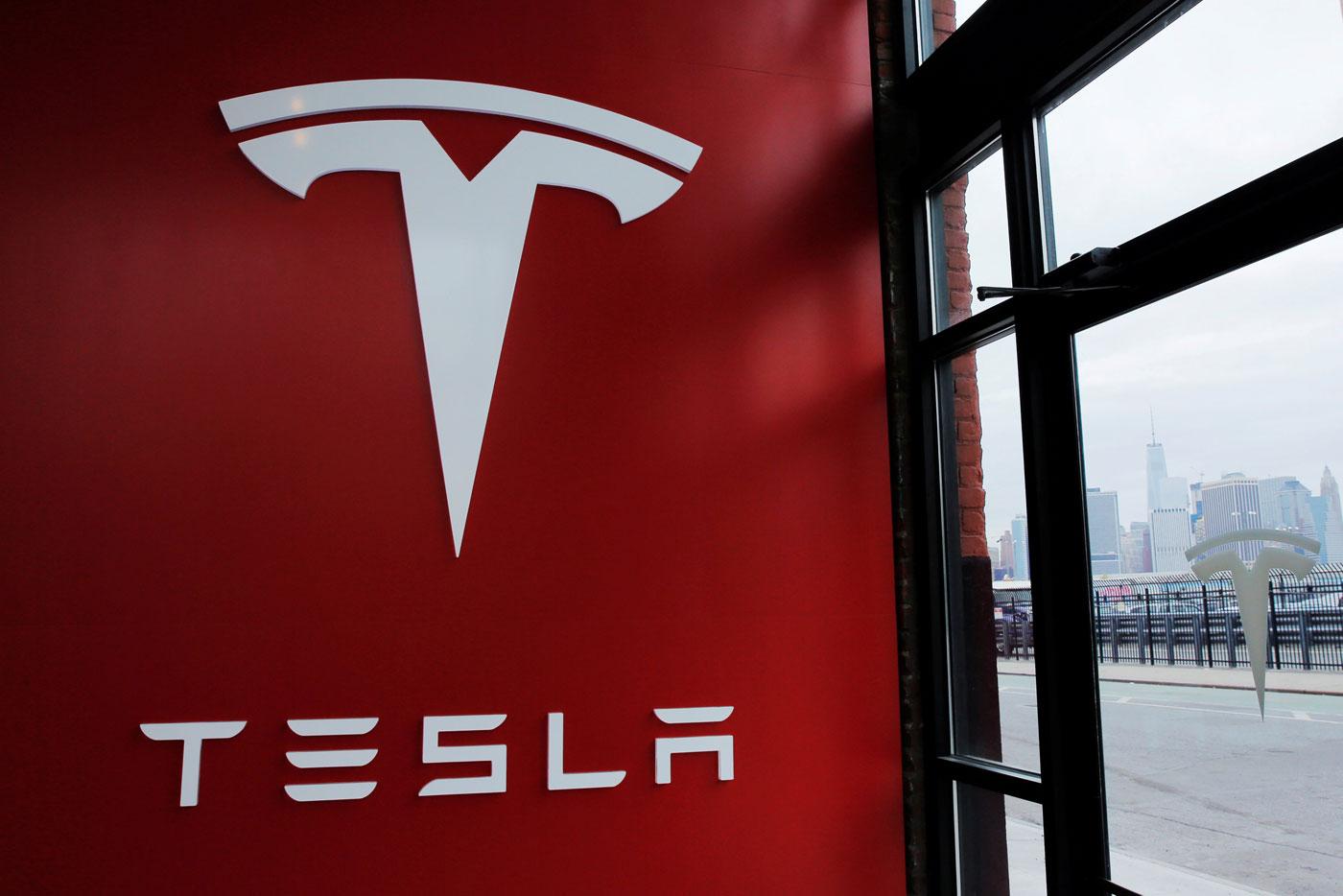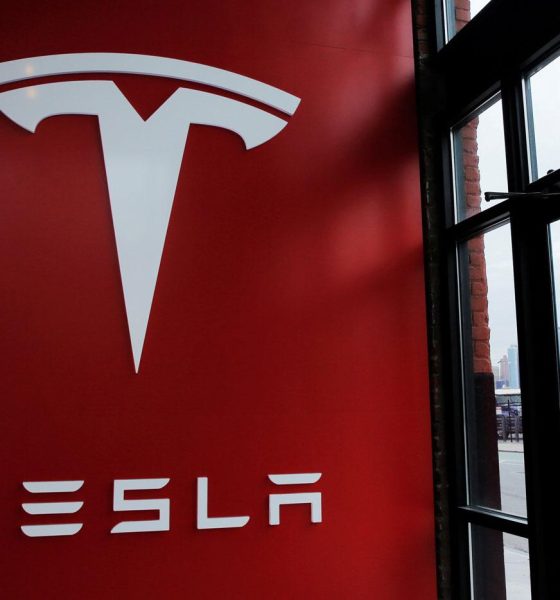

News
Here’s how your Tesla could be affected by AT&T’s 3G network shutdown
AT&T will officially shut down its 3G network today, completing a phase-out of the near-obsolete connectivity as newer, high-speed options are now available. If you own a Model S vehicle built before June 2015, your car may be affected.
AT&T planned to shut down its 3G network as LTE, 4G, and 5G networks offer customers faster speeds. 3G is simply no longer needed. However, customers of other companies who have used AT&T’s 3G network are also affected. This, unfortunately, includes anyone who owns a pre-June 2015 build of the Model S, as its infotainment center needs to be upgraded to be compatible with the newer networks.
In July, Teslarati reported that AT&T’s 3G network shutdown would require a retrofit in any Model S built before June 2015. The retrofit is available for only $200, even though a vehicle affected could be nine years old by this time. Infotainment Upgrades for owners who drive pre-April 2018 versions of the Model S or Model X are eligible to purchase the MCU2 upgrade as well, but it’s available for $2,000 plus tax unless Autopilot Computer 2.0 or 2.5 is installed. For vehicles equipping the Autopilot 2.0 or 2.5 computer, the upgrade is only $1,500.
How to know if your Tesla Model S is affected
Tesla encourages owners to check if their vehicles are affected. “Your vehicle will be affected by AT&T’s 3G network shutdown if it is a Model S vehicle built before June 2015 and has not been upgraded to an LTE-capable modem or purchased Infotainment Upgrade, as these vehicles were not produced with a 4G/LTE capable modem.”
“You can also check your vehicle’s cellular network by looking at the connectivity status bars/icon near the top of the touchscreen. If ‘LTE’ is displayed next to this icon at any time (may require stable cellular connectivity), your vehicle will not be affected by AT&T’s 3G network shutdown,” Tesla said.
Owners can schedule the appointment by going to the Tesla Mobile App. Select ‘Schedule Service’ > ‘Upgrades & Accessories’ > ‘LTE Upgrade.’
The upgrade is needed because the Model S built before June 2015 uses a modem that is 3G compatible. New builds contain LTE-compatible modems that will operate with 4G and 5G networks.
Without upgrading, owners will lose the ability to access the following features unless connected to Wi-Fi:
- Roadside assistance to unlock your vehicle remotely
- Certain mobile app capabilities, including Summon, cabin pre-conditioning, vehicle location, remote unlock, etc.
- Certain Infotainment features, including navigation, maps, live traffic updates, up-to-date Supercharger availability and outage information, online music streaming, and onboard map updates
- Over-the-air updates
AT&T told CNN Business in a statement earlier today, “For nearly two years, we’ve proactively sent numerous communications via direct mail, bill messaging, emails and text messages to help customers transition to next-generation networks before 3G services end on February 22.” AT&T has been provided free replacement phones to many users with a 3G device since 2020.
3G networks launched back in 2002 and were an integral part of the growth of cell phones and wireless communications. Eventually, faster speeds were needed and shutting down the 3G networks globally is part of a larger commitment to re-use 4G and 5G infrastructure, which is more efficient than 3G. Verizon and T-Mobile will also deactivate their 3G networks by the end of the year.
I’d love to hear from you! If you have any comments, concerns, or questions, please email me at joey@teslarati.com. You can also reach me on Twitter @KlenderJoey, or if you have news tips, you can email us at tips@teslarati.com.

Elon Musk
Starlink passes 9 million active customers just weeks after hitting 8 million
The milestone highlights the accelerating growth of Starlink, which has now been adding over 20,000 new users per day.

SpaceX’s Starlink satellite internet service has continued its rapid global expansion, surpassing 9 million active customers just weeks after crossing the 8 million mark.
The milestone highlights the accelerating growth of Starlink, which has now been adding over 20,000 new users per day.
9 million customers
In a post on X, SpaceX stated that Starlink now serves over 9 million active users across 155 countries, territories, and markets. The company reached 8 million customers in early November, meaning it added roughly 1 million subscribers in under seven weeks, or about 21,275 new users on average per day.
“Starlink is connecting more than 9M active customers with high-speed internet across 155 countries, territories, and many other markets,” Starlink wrote in a post on its official X account. SpaceX President Gwynne Shotwell also celebrated the milestone on X. “A huge thank you to all of our customers and congrats to the Starlink team for such an incredible product,” she wrote.
That growth rate reflects both rising demand for broadband in underserved regions and Starlink’s expanding satellite constellation, which now includes more than 9,000 low-Earth-orbit satellites designed to deliver high-speed, low-latency internet worldwide.
Starlink’s momentum
Starlink’s momentum has been building up. SpaceX reported 4.6 million Starlink customers in December 2024, followed by 7 million by August 2025, and 8 million customers in November. Independent data also suggests Starlink usage is rising sharply, with Cloudflare reporting that global web traffic from Starlink users more than doubled in 2025, as noted in an Insider report.
Starlink’s momentum is increasingly tied to SpaceX’s broader financial outlook. Elon Musk has said the satellite network is “by far” the company’s largest revenue driver, and reports suggest SpaceX may be positioning itself for an initial public offering as soon as next year, with valuations estimated as high as $1.5 trillion. Musk has also suggested in the past that Starlink could have its own IPO in the future.
News
NVIDIA Director of Robotics: Tesla FSD v14 is the first AI to pass the “Physical Turing Test”
After testing FSD v14, Fan stated that his experience with FSD felt magical at first, but it soon started to feel like a routine.

NVIDIA Director of Robotics Jim Fan has praised Tesla’s Full Self-Driving (Supervised) v14 as the first AI to pass what he described as a “Physical Turing Test.”
After testing FSD v14, Fan stated that his experience with FSD felt magical at first, but it soon started to feel like a routine. And just like smartphones today, removing it now would “actively hurt.”
Jim Fan’s hands-on FSD v14 impressions
Fan, a leading researcher in embodied AI who is currently solving Physical AI at NVIDIA and spearheading the company’s Project GR00T initiative, noted that he actually was late to the Tesla game. He was, however, one of the first to try out FSD v14.
“I was very late to own a Tesla but among the earliest to try out FSD v14. It’s perhaps the first time I experience an AI that passes the Physical Turing Test: after a long day at work, you press a button, lay back, and couldn’t tell if a neural net or a human drove you home,” Fan wrote in a post on X.
Fan added: “Despite knowing exactly how robot learning works, I still find it magical watching the steering wheel turn by itself. First it feels surreal, next it becomes routine. Then, like the smartphone, taking it away actively hurts. This is how humanity gets rewired and glued to god-like technologies.”
The Physical Turing Test
The original Turing Test was conceived by Alan Turing in 1950, and it was aimed at determining if a machine could exhibit behavior that is equivalent to or indistinguishable from a human. By focusing on text-based conversations, the original Turing Test set a high bar for natural language processing and machine learning.
This test has been passed by today’s large language models. However, the capability to converse in a humanlike manner is a completely different challenge from performing real-world problem-solving or physical interactions. Thus, Fan introduced the Physical Turing Test, which challenges AI systems to demonstrate intelligence through physical actions.
Based on Fan’s comments, Tesla has demonstrated these intelligent physical actions with FSD v14. Elon Musk agreed with the NVIDIA executive, stating in a post on X that with FSD v14, “you can sense the sentience maturing.” Musk also praised Tesla AI, calling it the best “real-world AI” today.
News
Tesla AI team burns the Christmas midnight oil by releasing FSD v14.2.2.1
The update was released just a day after FSD v14.2.2 started rolling out to customers.

Tesla is burning the midnight oil this Christmas, with the Tesla AI team quietly rolling out Full Self-Driving (Supervised) v14.2.2.1 just a day after FSD v14.2.2 started rolling out to customers.
Tesla owner shares insights on FSD v14.2.2.1
Longtime Tesla owner and FSD tester @BLKMDL3 shared some insights following several drives with FSD v14.2.2.1 in rainy Los Angeles conditions with standing water and faded lane lines. He reported zero steering hesitation or stutter, confident lane changes, and maneuvers executed with precision that evoked the performance of Tesla’s driverless Robotaxis in Austin.
Parking performance impressed, with most spots nailed perfectly, including tight, sharp turns, in single attempts without shaky steering. One minor offset happened only due to another vehicle that was parked over the line, which FSD accommodated by a few extra inches. In rain that typically erases road markings, FSD visualized lanes and turn lines better than humans, positioning itself flawlessly when entering new streets as well.
“Took it up a dark, wet, and twisty canyon road up and down the hill tonight and it went very well as to be expected. Stayed centered in the lane, kept speed well and gives a confidence inspiring steering feel where it handles these curvy roads better than the majority of human drivers,” the Tesla owner wrote in a post on X.
Tesla’s FSD v14.2.2 update
Just a day before FSD v14.2.2.1’s release, Tesla rolled out FSD v14.2.2, which was focused on smoother real-world performance, better obstacle awareness, and precise end-of-trip routing. According to the update’s release notes, FSD v14.2.2 upgrades the vision encoder neural network with higher resolution features, enhancing detection of emergency vehicles, road obstacles, and human gestures.
New Arrival Options also allowed users to select preferred drop-off styles, such as Parking Lot, Street, Driveway, Parking Garage, or Curbside, with the navigation pin automatically adjusting to the ideal spot. Other refinements include pulling over for emergency vehicles, real-time vision-based detours for blocked roads, improved gate and debris handling, and Speed Profiles for customized driving styles.








